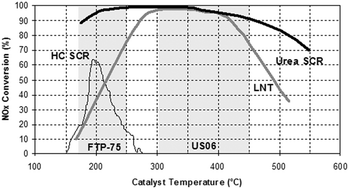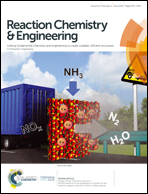Perspective on SCR NOx control for diesel vehicles
Abstract
The selective catalytic reduction of NOx with aqueous urea (“urea SCR”) is originally a steady-state technology used in stationary source NOx control. Catalysts for this application are usually quite large, and typically consist of lower cost materials such as vanadia/titania or Fe/zeolite. The catalyst bed temperature may be controlled within an optimum NOx conversion window, and the gas flow is fairly constant; therefore, the aqueous urea injection is also fairly constant. Vehicle operation, on the other hand, is highly transient in flow and temperature based on customer demanded vehicle speed, load, road conditions, weather, etc., and may not be predicted. A catalyst must work in the vast majority of conditions found in normal vehicle use, and the catalyst size is limited by space and weight considerations. People drive vehicles, not catalysts, and emission control is not a feature that is highlighted in a marketing advertisement. Aqueous urea must be replenished for SCR to work, and the transient nature of the injection process makes it very different from stationary source NOx control. The SCR catalyst must function and survive in a multi-component system that also controls hydrocarbons, carbon monoxide, and soot, and faces poisoning by sulfur, phosphorus, and a variety of other elements present in fuel, oil, and any upstream component including other catalysts. The SCR catalyst can experience temperatures below 200 °C and as high as 700 °C in typical vehicle operation, or even 900 °C when coated on a soot filter. The selection of functional materials, durability tests representing high mileage, and even more important, tests to failure, become critical decisions in the design of automotive urea SCR. This Prospective aims to summarize the key design questions and how to navigate the myriad of choices through careful research and practical considerations. The subsequent flurry of research on Cu/CHA after commercial launch on vehicles is considered, plus a look at the future applicability of the technology.

- This article is part of the themed collection: Selective catalytic reduction of NOx


 Please wait while we load your content...
Please wait while we load your content...